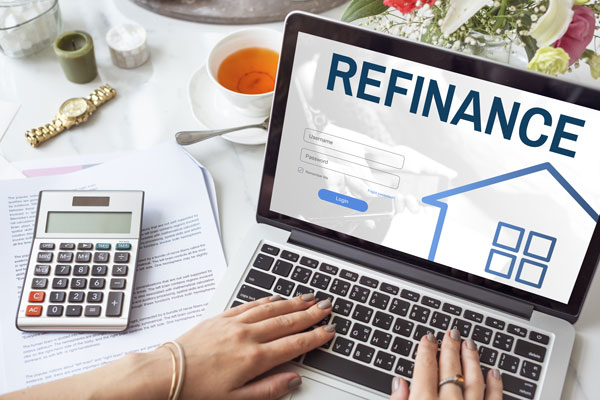Let’s talk about it!
These days you have a feast of riches when it comes to mortgage options. In addition to the four big banks, there are many other lenders available to you. And you might be surprised to learn that a number of them offer refinance home loan deals that can save you thousands.
What is home loan refinancing?
Simply put, home loan refinancing is when you move your home mortgage from one loan package to another. This can be done with your existing lender (internal refinance), or you can transfer your mortgage to another bank or lender (external refinance).
In both cases, the object is to save money by finding the best loan repayment agreement. You may be able to achieve savings on your mortgage repayments either through refinance home loans rates, or refinance home loans deals. Or sometimes both.
What do we mean by refinance home loans rates?
Let’s say that last year you fixed your home loan interest rate for two years. Now, one year into that fixed-rate agreement, you notice that other banks, or maybe even your own bank, are offering home loans at a lower rate of interest than your current rate.
You might feel cheated if this happens, but don’t because you may still be able to refinance your mortgage and join the happy savers.
Can you exit a fixed loan agreement?
Yes, you can. However, you would only do this if the long-term outcome saves you more money than staying in the fixed term agreement until it expires. In other words, if it costs you $2,000 to pay the penalty (also called break costs or exit fees) for breaking your fixed-interest loan agreement, but you save $3,500 by entering into a new lower interest rate agreement, then you might decide it’s worth it.
You should contact your bank or lender to find out the cost of breaking your loan agreement or, better still, speak to a mortgage broker. They can do the calculations and help work out the best option for your circumstances.
And what about those refinance home loan deals?
If you’re interested in finding out how to refinance a home loan, you may have noticed special offers advertised by different mortgage lenders.
These special offers – also called refinance home loan deals – can involve ‘cashback bonuses’ that lenders offer to attract potential customers away from their competitors. The bonuses can range from a few hundred to several thousand dollars.
It appears that you get two benefits for the price of one. You can negotiate mortgage terms that better suit your financial situation and pick up some extra cash as well.
But, take care to always read the small print in your loan agreement. Cashbacks can be great and the fixed interest rate looks attractive, but check whether you’ll be moved to a higher variable rate at the end the fixed period. This rate may not be competitive.
Added flexibility
If you’re looking at how to refinance a home loan you might also select a loan package that better suits your needs. You can choose between a fixed or variable rate, or even have the option of an interest-only loan for part of the life of your mortgage. You might also be able to include an offset account or redraw facility in your loan agreement.
Something else to consider is consolidating your other loans into your home mortgage. For example, if you have a personal loan on your car, you may want to consolidate it into your new home loan.
What’s an offset account?
An offset account is a bank account that’s linked to your mortgage. In most ways it works like a normal account. You can link it to a debit card, withdraw cash and pay your bills through it.
An offset account will also help you as a mortgage holder because the amount you keep in it will be offset against the principal balance of your home loan. This is a neat accounting strategy that reduces the amount you owe that, in turn, reduces the amount of interest you pay.
An offset account could work like this. Say you owe $250,000 on your mortgage, but have a balance of $75,000 in your offset account. That means the bank will only calculate your interest on $175,000 ($250,000 minus $75,000). The offset amount is calculated daily so your mortgage offset will go up and down in accordance with the balance in your account.
You might also be able to have a partial offset account, where a defined percentage of your bank balance will be calculated against your mortgage. So, if you had a 50% offset account linked to your mortgage, like in the last paragraph, only half of that $75,000 would be offset from your home loan. You’d pay interest on $212,500 ($250,000 minus $37,500).
What is a redraw facility?
A redraw feature lets you withdraw any additional payments you’ve made above the minimum mortgage repayment. We call it a redraw facility because it doesn’t require a separate bank account like the offset. It’s simply part of your mortgage account. Redraw lets you withdraw an amount up to the value of those extra payments you made on your mortgage over the years.
Keep in mind that a redraw facility only relates to those extra payments above the minimum mortgage requirement.
Loan portability
Another option available with some mortgages is portability. This is the capacity to transfer your loan from your existing home to any new one you buy. Of course, this requires a professional valuation of your new home. But if you’re approved, it means you can take your existing mortgage with you and have a no fuss move to your new home.
Liberating your equity
Equity is the amount of value your home has accumulated over time, minus what you currently owe on your mortgage. For example, you purchased a home 15 years ago for $500,000. Your home’s current market value is $750,000 and you’ve paid $150,000 off your loan. That means you have equity of $400,000 in your property.
This is derived from an increase of $250,000 in the property value, plus $150,000 that you paid off the mortgage over 15 years.
When you refinance, you can put that equity to good use. You might want to buy a new car or renovate your home. Or you might use the equity as the down payment for the purchase of an investment property.





